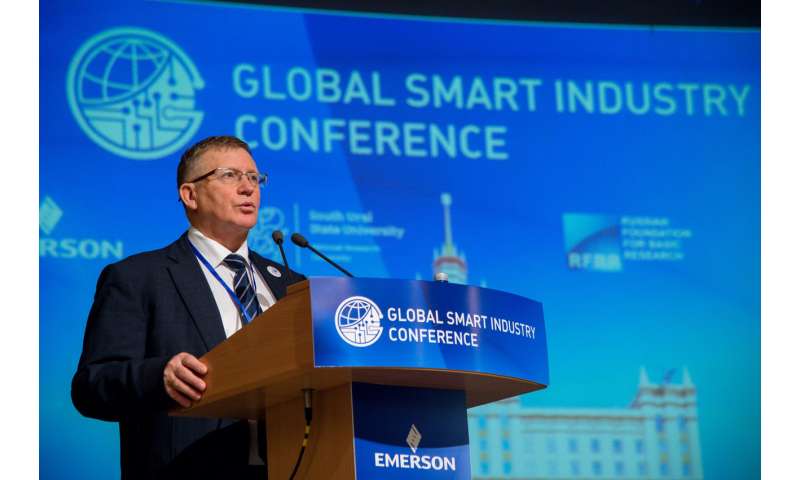International Experts Discuss the Future of the Digital Industry at the SUSU Conference

Russian and international engineers and researchers discussed digital manufacturing at 2018 Global Smart Industry Conference held November 13th-15th at South Ural State University (SUSU), reports the university press service to RIA Novosti.
Organised in collaboration with the leading company in digitisation Emerson (USA), the conference was aimed at discussing the breakthroughs of Industry 4.0 and digital manufacturing. International universities and research centres were among the participants and shared their experience on bringing innovation into organisations.
The conference saw the opening of the SUSU-Emerson research laboratory that features state-of-the-art automation facilities, and Samsung Internet of Things Academy.
Professor Goran Putnik from the School of Engineering at the University of Minho believes that to become a university of the future, institutions have to implement advanced technologies such as digital computing and high-performance computing.
"Universities must be fully equipped with the new generation of computing technologies. This is important for training both engineers and humanities students and meets the requirements of Industry 4.0," he noted in his conference presentation.
Another important aspect, according to Professor Putnik, is the role of social networks in society within the context of Industry 4.0.
"There are people in the world concerned with how new technologies will be used. This concern is completely justified because we still do not have a clear understanding of the interaction between Industry 4.0 and society, although this question is critical. I think that social networks can play a key role in establishing a dialogue on this topic in which everyone can participate," he stated.
Professor Sheng Yin from Harbin Institute of Technology (China) discussed the contribution of cyber-physical systems to manufacturing development through the process of industrialisation and informatisation.
A cyber-physical system links the physical world with the virtual world through sensors and actuators. It consists of diverse parts (software systems, communications technology, and sensors/actuators) that interact with the real world and work together to create some global pattern.
"Cyber-physical systems are at the core of Industry 4.0 and industrial development. In traditional industrial manufacturing, the parts of the system were not connected, and the system was not "smart". Today we are faced with the growing scale of manufacturing and more complex systems. The inefficient transfer of information and use of the existing knowledge threatens the general safety and stability of the system. Cyber-physical systems can solve the issues of tracking and control," says Professor Sheng Yin.
According to him, big data has helped engineers to effectively combine all parts of cyber-physical systems and join them together with other systems, making them smart.
"We use these technologies for the analysis of big data. Integrated industrial cyber-physical systems will become the foundation of the intelligent factory of the future," concluded Professor Sheng Yin.
SUSU representatives noted that it is the first time an international conference of such level was held at the university. The organisers plan to hold digital industry conferences on an annual basis.
Provided by South Ural State University